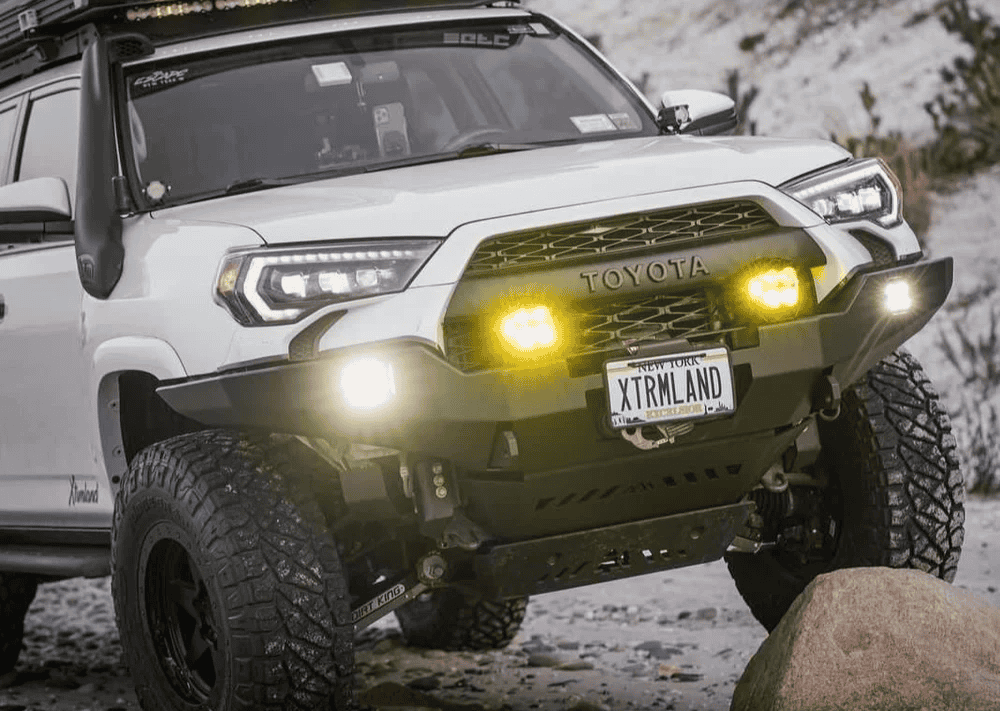Overland Vehicles

A Ram 2500 responds well to a thoughtful off road upfit because it starts with a stout frame, strong axles, and serious brakes. The goal is not to stack parts but to balance compliance, traction, and protection while preserving payload and towing. Most builds begin with suspension tuning that controls heavy loads and rough terrain, then move to tires that add ground clearance and grip without overwhelming steering or brakes. Armor protects critical systems when the trail turns rocky, while recovery gear helps you get unstuck without drama. A well planned system feels composed on washboard and predictable at highway speed.
Heavy duty trucks ride differently than half tons, and upgrades should respect that. Quality shocks with position sensitive damping tame chatter and keep tires planted on broken surfaces. Springs and helper systems should match real world loads, not brochure numbers. Aim for droop travel first to maintain contact and braking stability. A small, well tuned lift can improve approach and departure angles without stacking weight high. Keep caster in a happy range after adjustments so the truck tracks straight and the wheel self centers.
Traction starts at the tread. Many owners target 35 or 37 inch all terrains for a sweet spot of clearance and manners. If you go taller, evaluate axle ratio to keep transmission shift points and converter lockup in check, especially when towing. Selectable lockers are powerful tools but require respect; they shine on slow technical climbs and deep mud, not on side hills or high speed corners. A limited slip rear remains a great everyday solution for mixed use.
Skid plates for the steering, transmission, and transfer case prevent trip ending punctures. A front bumper with good approach angle and winch integration adds confidence on step ups and in snow. Add frame mounted recovery points front and rear, a kinetic rope, soft shackles, a shovel, and traction boards. Practice a safe recovery sequence in a controlled environment before the first trip so you can work calmly when conditions are messy.
Every off road upfit must respect gross vehicle weight rating and axle ratings. Start with a scale ticket to learn actual front and rear axle weights with your typical gear. From there you can choose springs, shocks, and sway options that do not over stiffen an empty ride. Wheel choices matter too: lighter but strong wheels reduce unsprung mass and help your shocks work. Be thoughtful with offset to avoid rubbing, keep scrub radius reasonable, and reduce stress on ball joints and tie rods.
Gearing should match your region and load. Mountain towing often benefits from deeper ratios to hold gears during long climbs. In flat country with an empty bed, moderate ratios can keep revs down and fuel economy steadier. Whatever you pick, re calibrate the speedometer and driver aids to maintain accurate readings.
As tire diameter climbs, so does braking demand. High friction pads and quality rotors help, but technique matters too. Use engine braking on descents and keep speeds conservative on washboard where stopping distances grow. After any lift, re align the truck, verify bump stop engagement, and check brake line routing at full droop and lock.
A small height increase can change caster and toe. Restoring caster stabilizes straight line tracking and reduces driver fatigue on long days. Verify track bar angles and consider correction brackets to reduce bump steer. If you feel a kick in the wheel over dips, geometry is likely the culprit, not just shock valving.
Secure heavy items low and forward in the bed to protect handling. Tie down points, bed racks, and drawer systems should avoid cantilevered weight high above the axle. Keep spares and tools accessible so you can service the truck without unloading your whole camp.
Electrical planning keeps the truck reliable. A dedicated auxiliary circuit with fused distribution prevents makeshift splices. Dual battery or a high output alternator paired with a DC to DC charger supports fridges, lights, and compressors. Lighting should favor useful beam patterns over raw lumen numbers: pair a wide flood for slow trails with a driving beam for faster dirt. Aim lights correctly to protect other drivers. Onboard air speeds tire pressure changes and powers air springs and tools after a trail day.
When a build deserves experienced hands, partner with a team that understands heavy duty platforms and trail balance. Explore our Overland rigs to see how complete systems come together for real terrain. If you want a plan that matches your routes and loads, our Custom upfit process maps needs to parts, then executes cleanly. Still evaluating shops and process? Learn more at Why choose OZK.
Tell us how you use your Ram 2500, the tire size you prefer, and what you tow. We will engineer a balanced upfit, install it with care, and hand you a truck that tracks straight, rides composed, and climbs confidently. Your next trailhead deserves a better arrival.
Ready to turn your Ram 2500 into a confident trail machine? Tell us how you drive, what you tow, and where you roam. We will blueprint a balanced build, install pro grade components, and hand you a truck that feels dialed on day one. Start your build plan now.
ADDRESS:
6159 E Huntsville Rd, Fayetteville, AR 72701
PHONE:
(479) 326-9200
EMAIL:
info@ozkvans.com